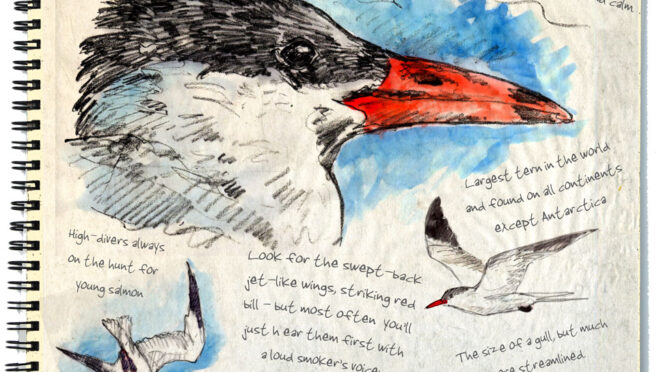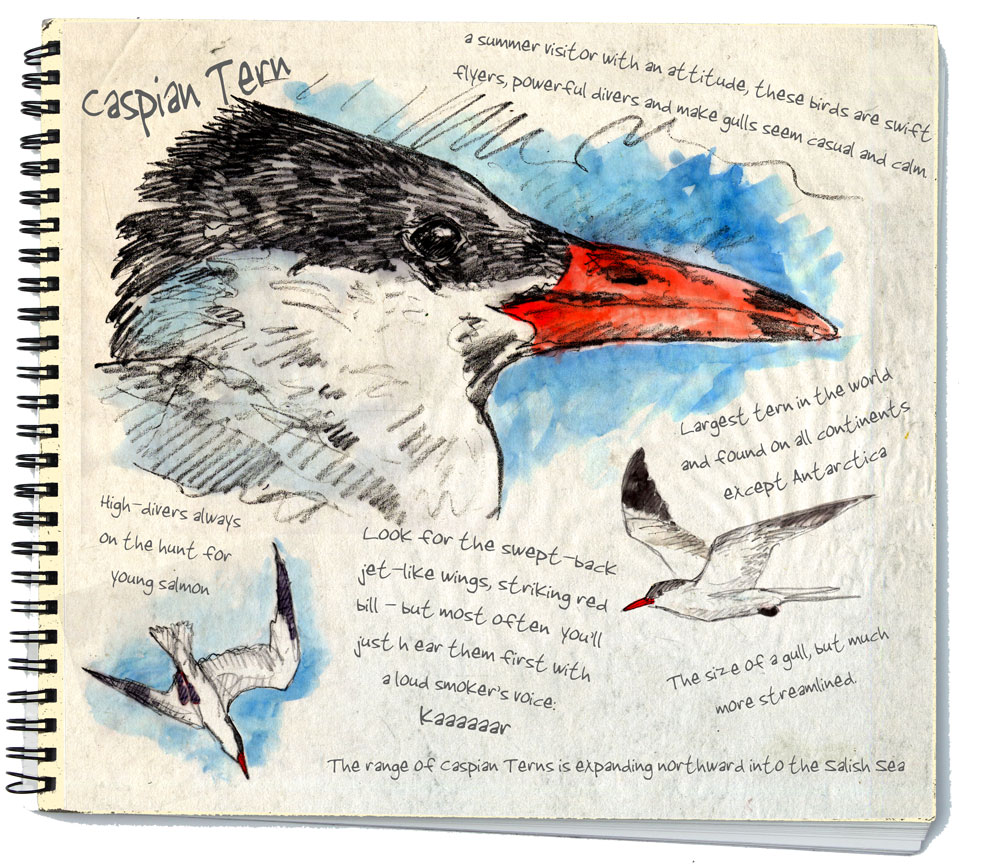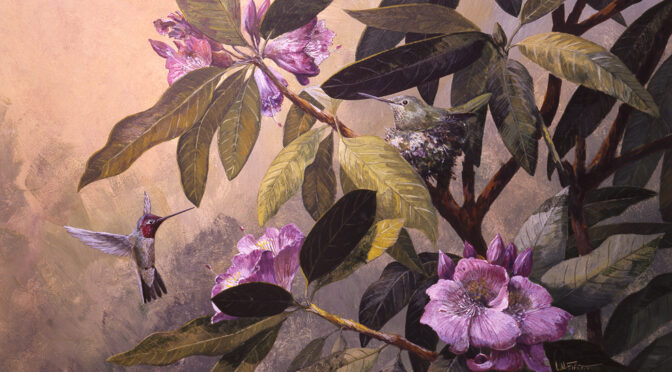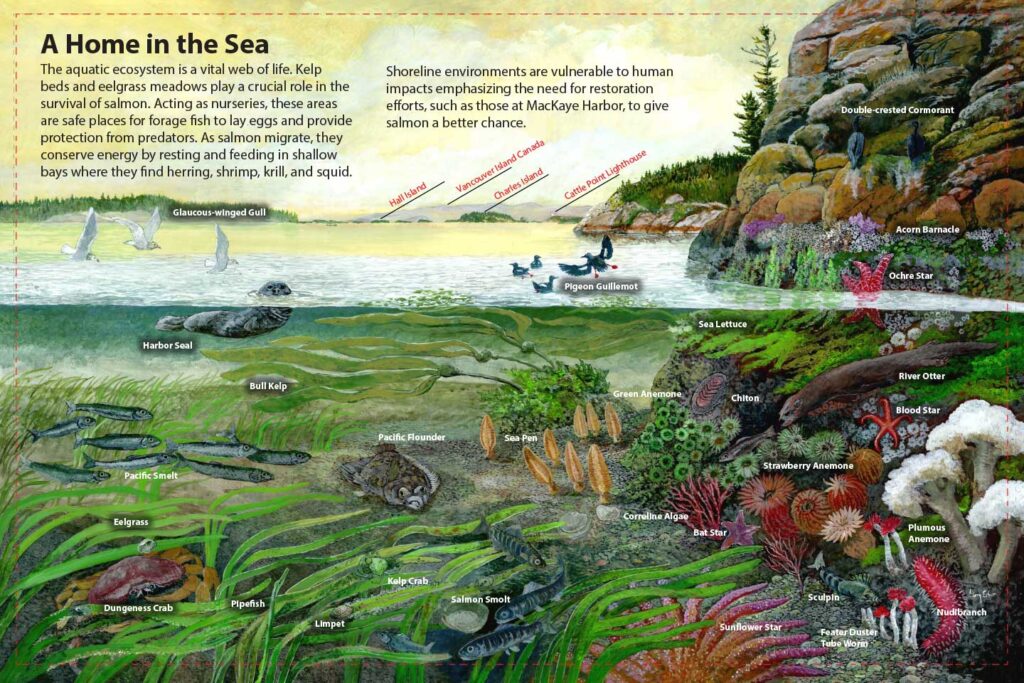
This is one of three paintings for MacKaye Landing on Lopez Island – in the San Juan Islands of Washington State. It’s another restoration project to enhance altered shorelines and make them healthier for forage fish, salmon’s main food source. I THINK, these three a total of 38 waysides in the San Juan Islands, a place I called a summer home in the 1980’s, so they all have good meaning for me.
They were commissioned by the County, another project like the Orcas Landing panels a few years ago. Katie and Frankie wrangled me into submission (in good ways) to produce these. I’ll show the others in the next post.
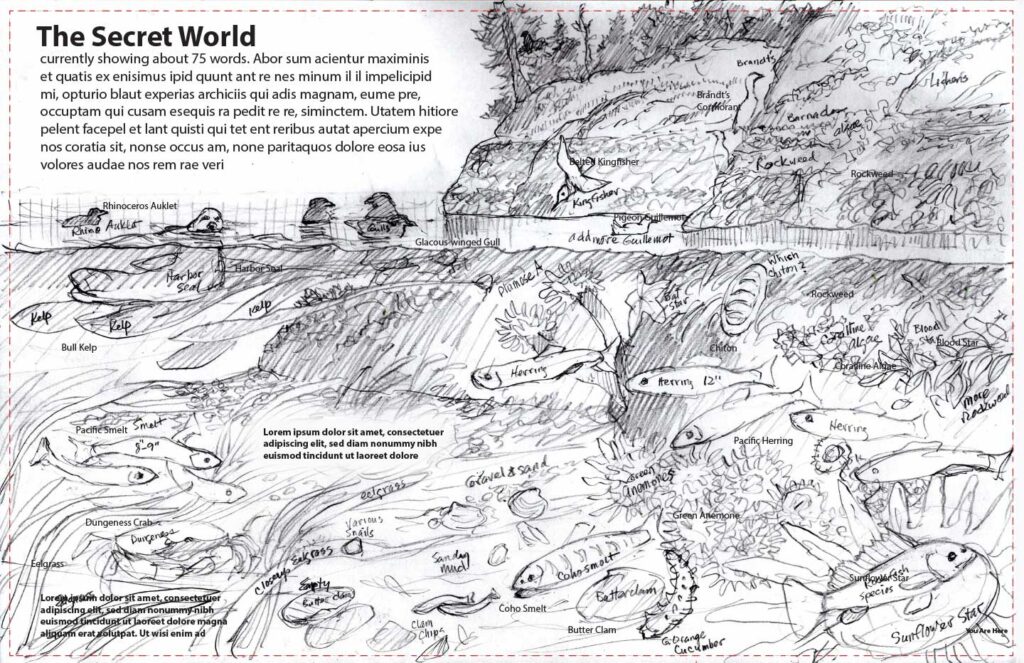
This photo below is from the boat ramp area where the panels will go, a peaceful and beautiful place, Canada’s Vancouver Island in the far distance, the Cattle Point Lighthouse just peeking out – where I have two murals (one is the 37′ Indian wall). This is a prime launch for kayakers and fishermen aiming for the archipelago of islands near Cattle Pass. A truly beautiful place.

As I was deciding what this habitat panel would look like, I happened to view a YouTube video of two Canadians doing a kayak trip here, with lots of underwater photography showing the amazing variety of aquatic life along these south-facing rocks, which I love to paint – so it was easy to focus on that. Below is the concept sketch I made just after watching that video.
I anchored here several times in the 1980’s, and as I remember, it was a rolling anchorage with swells coming in at 90 degrees from the boat’s angle – not good for sleeping. And here I am, back with some art that will live here for decades – and be seen long after I’m gone – my favorite public art. For me, it’s a small world in hopefully a long life of art – and I’m just trying to remain relevant while I’m still here.
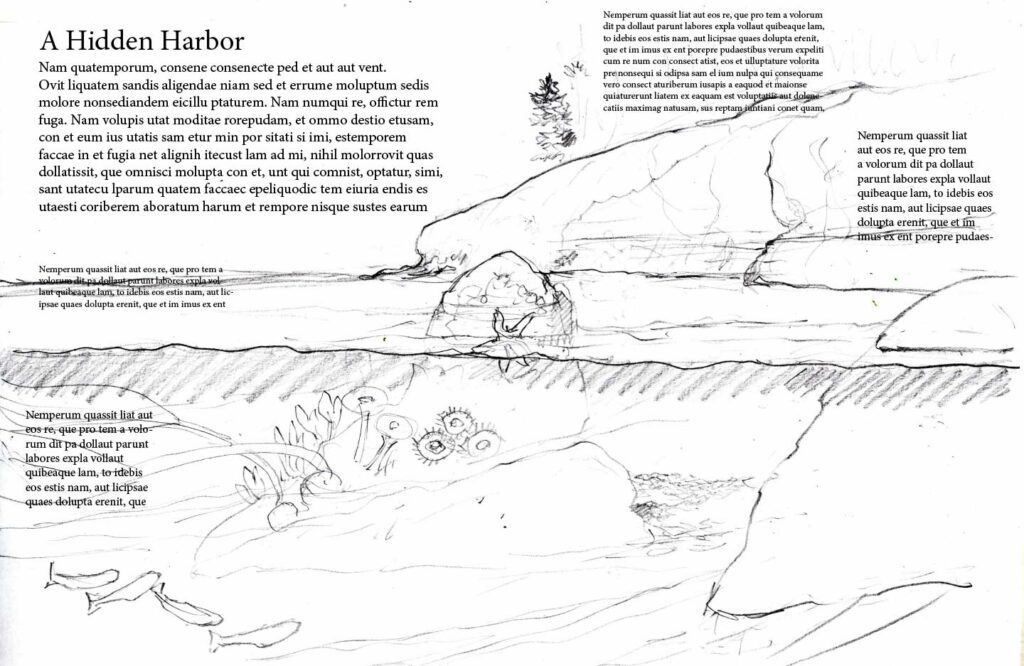
Thanks for reading this week. You can sign up for emails for these posts on my website at larryeifert.com.
Larry Eifert
Here’s my Facebook fan page. I post lots of other stuff there.
Click here to go to our main website – with jigsaw puzzles, prints, interpretive portfolios and lots of other stuff.
Nancy’s web portfolio of stunning photography and paintings.
And here to go to Virginia Eifert’s website.

